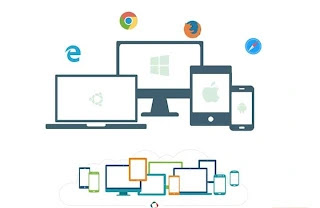The future always surprises us. Before the recent corona pandemic, we thought of school as a place that was open all year round. Technology is supposed to help teachers, not take their place. Face-to-face teaching, group learning of students seemed very natural to us. But everything changed in the first few months of the pandemic.
Simple assumptions are not enough if we are to future-proof education systems. We have to keep in mind the situation, which we are not even imagining now. It will help us to deal with any situation. Let’s see what the school system of the future might look like.
The Scope Of The School Will Be Bigger
Student participation in institutional education will increase. Cooperation between countries and technological development will help individual learning. As the state becomes more involved in the education of its citizens, the traditional schooling system will continue to be abolished.
Various opportunities are being created for education. These technology based learning centers are private and simple in approach.
Schools Will Be Centers Of Education For Citizens
Schools will exist but they must be diverse, receptive and experimental. As the schools begin to open, there will be more contact with the community. It will bring out new ways of education. Interaction between citizens will increase and social innovation will pave the way. Learning will be available everywhere and anytime. The distinction between formal education and non-formal education will then no longer work.
Re-Targeting
The real question is, is the environment, people, time, technology around us helping or hindering us to achieve the desired goals we want to achieve in the school system?
When we modernize and refine the current education system like redecorating the doors and windows of the house, will it serve our purpose? Or do we need educational institutions to move forward with a completely new plan of people, space, time, technology?
What we still want to do is to modernize and scale up the current school system. A common form of subject and field of study is now being developed throughout the education system, i.e. everyone is moving towards closer standards. Digital learning and homework delivery has become quite popular in primary education.
The emphasis is now on enriching the individual’s learning experience. The use of digital technology is increasing every day. But still its use is limited to conveying the conventional content of education. Technology has yet to revolutionize teaching and learning.
How Can The Transformation Come?
The first change will come in the places we think of for learning. But this does not mean that classroom chairs and tables are rearranged. Instead, new areas of learning will be created in both real and virtual ways, inside and outside the school. In future, students will have customized curriculum and learning methods as per their needs. Where there will be the latest technology, the use of things like body language information exchange, facial expressions or neural signals.
We will also see, beyond the curriculum i.e. academic subjects, there will be work for society and community at the individual and collective levels. As there will be writing, reading, calculating, there will be debates and discussions together. Students will learn from their books and lectures as well as through hands-on work and using their artistic expression.
Imagine schools becoming a hub for all forms of learning and harnessing the power of community to innovate collaborative learning. What will happen when schools create new areas of non-formal learning where time and relationships are no longer the same?
It may also be that the school system no longer exists. Rapid advances in artificial intelligence, virtual and augmented reality, and the Internet of Things will make it possible to assess and certify students in the future, and to instantly verify things like skills and attitudes. As the gap between formal and non-formal learning diminishes, people will be able to solve real-life problems by themselves using collective knowledge.
Although these may sound like fantasy now, our lives are now controlled by smartphones, smartwatches and digital personal assistants in ways we could not have imagined a decade ago.
School systems in many countries are decentralizing from the national level to the local level and increasingly to the international arena. The power is now spread to everyone, and the work process is now open to everyone.
We can think of numerous such possibilities. In the future there may be any one of these or any combination of them. What is happening in one part of the world may be different from another. Yet such thought is necessary.
These considerations will enable us to think about the purpose and function of education, institutions and their structures, people working in the education system and government policy making.
As a result, we can think more deeply about what kind of education system we want in the future. Through this conflict and anxiety will be resolved from within us. Let’s know the things that should be given primary importance in thinking about this matter.• What is the right balance between modernizing education and old ways?
• How do we bring new goals into the old framework?
• For those teachers and students emerging from the local level who have the power to think at the global level, what participatory methods will we use internationally?
• How can we pave the way for innovation while maintaining the conservative role of education in society?
• How can we leverage current capabilities to realize new opportunities?
• How can we create a strong environment for learning by leveraging the space, people, time and technology we have?
• If there is a difference of opinion, which system will we prefer?
• Who will take responsibility for the most vulnerable groups in society?
• How do we free our data rights, democracy, citizenship and education from the hands of the world’s biggest digital corporations?
• What is the right balance between modernizing education and old ways?
• How do we bring new goals into the old framework?
• For those teachers and students emerging from the local level who have the power to think at the global level, what participatory methods will we use internationally?
• How can we pave the way for innovation while maintaining the conservative role of education in society?
• How can we leverage current capabilities to realize new opportunities?
• How can we create a strong environment for learning by leveraging the space, people, time and technology we have?
• If there is a difference of opinion, which system will we prefer?
• Who will take responsibility for the most vulnerable groups in society?
• How do we free our data rights, democracy, citizenship and education from the hands of the world’s biggest digital corporations?
Predicting the future requires both a clear understanding of reality and the power of imagination. We often think about our preferred future and prepare ourselves accordingly. We must beware of this trend.
In the world of the future, epidemics, natural disasters caused by climate change, social unrest and political polarization will happen so much that we have no chance to be careless.
These are not words of despair. Rather, it is a call to action. Education system needs to be future ready. We know about the power of mankind. We also know how important it is for us to constantly learn new things and improve in life. Whatever happens in the future, we will continue to emphasize the importance of education as a citizen’s right.





